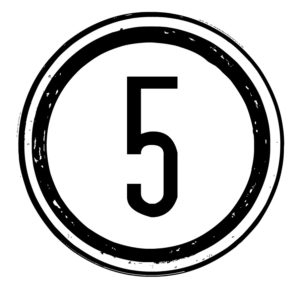
by Beth Levine | Mar 20, 2018 | preparing for a presentation, public speaking
I often wax on about audiences and audience-centricity: that you need to put your audience’s needs and interests ahead of your own, that it’s all about them, that they need tons of “guidance” in order to be able follow your presentation and get the point. All true. Perhaps never truer, as audiences have hand-held alternatives for their fickle feed-me-now attention spans.
 Guidance has always been a big one for me. Tell your audiences where you’re taking them, what you expect of them or want them to have at the end, when you’re digressing for a story, when you’re on main point #1, #2 or #3, and when you’re concluding. Don’t be afraid to speak your presentation structure out loud, so when an audience member’s attention drifts away, they’ll be able to track where you are when they bring their attention back to you.
Guidance has always been a big one for me. Tell your audiences where you’re taking them, what you expect of them or want them to have at the end, when you’re digressing for a story, when you’re on main point #1, #2 or #3, and when you’re concluding. Don’t be afraid to speak your presentation structure out loud, so when an audience member’s attention drifts away, they’ll be able to track where you are when they bring their attention back to you.
Two weeks ago, I was lucky enough to attend an executive speechwriting conference in Washington, D.C. Given the location, a lot of the speakers were from government and politics, but corporate America, higher education and healthcare were also nicely represented. There was a great cross-section of perspectives, experiences and standards shared by speakers and attendees alike. Friends and colleagues who knew I was going to the conference asked if I was speaking or attending. When I replied that I was attending and really excited to go and learn, I got some raised eyebrows.
Well, learn I did! I’ll admit it was gratifying when many of my methods and principles were validated by what I heard. But I’ll also readily admit that I took copious notes and brought back all kinds of new ideas.
Among those was “verbal wayfinding.” Verbal wayfinding is the more sophisticated term for guidance and is, in my view, a more well-developed concept. The other terms used interchangeably with verbal wayfinding were “breadcrumbs” and “signposts” – more than guidance, these refer to weaving into a speech or presentation thematic reminders and reinforcements as well as the structural ones that my word guidance encourages.
The bottom line is this: Your audiences have not seen your notes or read your script, nor have they rehearsed with you. They are fresh-earred, first-time listeners, and they will only hear it that one time. You and your material have shared countless moments together, but your audiences will share only one moment. It’s your job to make that moment count, make the material stick. Drop breadcrumbs throughout, put up signposts, script in verbal wayfinding, because it’s all about them, your audience, and they need guidance!

by Beth Levine | Oct 2, 2017 | preparing for a presentation, procrastination, public speaking
Last week, I lost my voice. Literally, I couldn’t talk. Laryngitis.
Naturally, I joked about it: The ironies of a communication coach not being able to speak – what good am I in this condition? What a pleasure and relief for my family – finally, a break and some much-wished-for silence! My own vocal chords were on strike – was it something I said?
I also wondered. When will it come back – a day, a week, longer? Who am I without my voice? Am I relegated to communicating digitally only? What did people with laryngitis do before texting and emailing?
I will admit, sudden onset of laryngitis prompted some panic and an existential crisis: Whoa, where did this come from, what did I do to bring this on? What would I do if I had to deliver a speech or presentation in this condition? Cancel, reschedule, or create a killer PowerPoint or video? How could I turn this seemingly negative event into a positive? (Maybe blog about it?) My livelihood depends on my voice, what would I do if this persisted?
Turns out, I was still me; I had the same thoughts, ideas, and feelings. I just couldn’t share them – vocally, that is. It also turns out, the people around me were at a little bit of a loss without the all-too-familiar sound that drove through my larynx – my news, my bad jokes, my unsolicited opinions and everything else I rattle off in the course of a day. It was quite interesting to observe how people reacted to my inability to speak, including the pharmacist who, perhaps in an attempt to empathetically mirror my limitations, gradually dropped his own voice to a raspy whisper to answer my barely audible questions.
The experience made me think about voice and the fact that it’s not my voice that I lost, it was only my ability to talk. I couldn’t talk. But I had a voice and could give voice without being able to make much sound. I could communicate. So as with any other change that occurs in life – for the better or the worse – I decided that, if this stayed with me, I would adapt. I would still communicate and spread my ideas (like the gospel of #audience-centricity!) through writing. Maybe I would work on another book and share my thoughts that way instead of through speaking engagements? Maybe I would become a speechwriter, creating the actual words for speakers instead of coaching them to formulate and deliver their own? Either way, not being able to talk was not going to be the end of me.
 Talking, I have realized, is overrated and overused (ergo, the gospel of #brevity!). Communication is the constant, it has evolved in infinite ways over the years, and adaptation is a constant too. Think about how we have communicated news for example. News was once shared via petroglyphs etched into rock and then eventually via newsprint on paper and currently via electronic transmission on a screen. And there are other examples as well, most notably the arts – visual arts, music, dance – all of which give voice and communicate but not necessarily through talking. Voice, which can and should be carefully cultivated and deployed, is something we all have no matter what. The various methods of communication at our disposal is how we share our precious voices.
Talking, I have realized, is overrated and overused (ergo, the gospel of #brevity!). Communication is the constant, it has evolved in infinite ways over the years, and adaptation is a constant too. Think about how we have communicated news for example. News was once shared via petroglyphs etched into rock and then eventually via newsprint on paper and currently via electronic transmission on a screen. And there are other examples as well, most notably the arts – visual arts, music, dance – all of which give voice and communicate but not necessarily through talking. Voice, which can and should be carefully cultivated and deployed, is something we all have no matter what. The various methods of communication at our disposal is how we share our precious voices.
P.S. About two days later, my voice returned – albeit not in fighting condition and still on the mend. Nevertheless, existential crisis averted and lesson learned: I never lost my voice and I never will.
by Beth Levine | Mar 15, 2017 | preparing for a presentation, public speaking
Know your audience. You’ve heard this bit of presentation advice before, right?

At SmartMouth, we talk a lot about #audience-centricity. It’s a pretty simple concept: focus on your audience and consider things from their perspective. It’s our more specific version of know your audience.
But we probably don’t talk enough about how to know your audience and what to do if they’re a diverse group and want/need different things.
Let’s explore how to know your audience – especially when you don’t actually know them – from these 4 different angles:
1. First, ask, look and listen (our version of stop, drop and roll, if you will). Ask whoever is coordinating the meeting or event about the audience; find out what they know about the audience’s expectations, wants and needs. Do some research on your audience’s industry or organization so you know their issues and priorities (this is where Google really earns its stripes!). Then use what you learned – in other words, be sure to assimilate the intelligence you gather into your presentation.
2. Second, there are some audiences who come into the room with glaringly different interests, some audiences with a single common interest, and some that fall in between. You’re all set with the ones who have a common interest, no worries there. But when you know ahead of time that members of your audience are coming into the room with varying levels of receptiveness or knowledge about your topic – e.g. some hostile/some friendly or some well-versed/some newbies – then you’ve got a challenge on your hands. This is where #transparency will give you a boost!
By telling you to be transparent, I’m recommending that you call it out. Let the audience know you know (that there’s a challenging dynamic in the room) so they don’t have to worry whether you know or, worse, think you’re disconnected. For example, you might open with: “I’m looking forward to talking today about XYZ Initiative. I know this is a project that brings strong supporters and equally strong detractors into the room. My hope is that after my update, we can have a productive, constructive dialogue, honor each other’s opinions, and leave the room feeling like things are on track and everyone’s concerns will be taken into consideration.”
Or: “I’m looking forward to talking today about XYZ Initiative. I know this is a project that some of you are up to speed on and some of you are hearing about for the first time. I will do my best to strike a balance while I present this update. As I go through the material, I’m going to ask for patience from those of you already high on the learning curve, and I’m going to invite questions from those of you who are new to this. By the end, I’m hoping we can have a robust, productive dialogue about the project.”
3. Third, engage them, ask them questions. Dip into the audience for input. If your audience is of a manageable size and you haven’t had an opportunity, for whatever reason, to “ask, look and listen” before entering the room, ask, look and listen when you’re in the room. For example, even when I know my audience, I will often introduce my topic and then solicit the audience’s “goals” around the topic – i.e. questions, concerns, issues on their minds related to the topic. This gives me more specific insight into what’s in it for them and where I might want to adapt or adjust my presentation. The added benefit is that they feel heard, recognized and hopefully, by the end, satisfied.
4. Fourth, there are certain general things that almost every audience wants whether you know them or not. They want you to keep to the allotted time or (let’s face it, even better) to finish early. They want a presenter who is prepared versus one who is noticeably disjointed and delivering on the fly (your audience doesn’t want to be your sounding board, they want to be the real deal). They want to be noticed and included; they want you to acknowledge them, engage with them, be present with them.
In the end, it really comes down to moving yourself toward being audience-centric versus egocentric. Yes, you have an agenda and cool stuff to share. But your audience also has an agenda. And since success is in the eyes of the beholder – your audience – you’ll want to be sure to skew your presentation toward satisfying their agenda. If you’re able to do that, I’m going to bet you end up satisfying your own too.
Feel free to comment on this or reach out with a question, I’m always happy to discuss further or to help!
by Beth Levine | Jan 30, 2017 | public speaking
Dear Coach Belichick,
I’m a Massachusetts native, so my team loyalties sway pretty heavily toward the
Celtics,
Red Sox and
Patriots (I’m not much of a hockey fan, but I guess
Bruins too). I’ve been observing you for some time as you give media interviews – post-game and others – and I am, like many, mostly amused yet sometimes frustrated.

Yeah, it’s kind of fun and funny to watch how you grunt out one-word answers as you oblige the press in your charmingly begrudging way. And yeah, the hoodie and messy hair are also part of your charm. And yeah, your annoyance with reporters’ stupid questions is our annoyance too. And for sure, you are an amazing coach, you’ll go down as one of the greats. No question there.
But.
Before Sunday, can we talk about what it would/could look like, sound like, and be like if you gave them (the sports media) and us (your fans and followers) a little bit more? Could I be so bold as to offer you some coaching?
Here are just a couple of suggestions for you that would enhance the overall post-game interview experience and outcome for everyone:
- Never mind the media, they’re just a conduit to your bigger audience. Show up in a way that tells us you want to connect with us. We love your #brevity, but with all due respect to dentists, don’t show up looking like you’re about to have all your teeth pulled. We feel a little jilted when you do that.
- Think about your audience, your ultimate audience – us, your fans and followers. We’re hungry, thirsty, sometimes crazed. Satisfy us, give us something to hold onto, something we can cling to, learn from, and/or repeat to others. #audience-centricity goes a long way toward keeping your fan base engaged and pulling for you.
- Win or lose, the emotions are intense. We get that. We have empathy, we’d hug you if we could. Share your emotions with us, let us in, give us a sense of what it’s like to walk around in your hoodie, cleats and headset. Please recognize we’re emotional too, but you’re our leader, and we will take our cues from you. Let us in a little more, give us more #transparency?
- We know you have haters, we get it. And we know the media can distort what you say and how you say it. But you’re one of the greats, surely you can rise above and give us all the #graciousness you have. Your loyalists want to be behind a winner, no matter what the outcome of the game is.
- You have a Super Bowl to win, so your #preparedness needs to be about strategy for game day and not necessarily about how you present yourself in front of the press. I’ll give you that. But I know you’re a pro, so when the game is over see what you can do to hit some or all of the above four points.
Hey, thanks for your time and good luck on Sunday!
Your coach,
Beth #jocktalkbook
by Beth Levine | Sep 21, 2016 | preparing for a presentation, public speaking

More often than not, what makes people freeze before a big presentation is the nagging question, “Am I even doing this right?” and its companion, the fear of embarrassment.
I’m always taken aback when smart, successful, otherwise confident people reveal that they’re afraid to make a fool of themselves. I would never have guessed in most cases.
Trust me when I say that no one is “a natural” at speaking and presenting; even the best of the best think about it, worry, and work at it. Regardless of your style or your comfort level with public speaking, it’s wise to consider some core guiding principles for yourself as a speaker.
Below are five foolproof principles of being an effective speaker or presenter that will give you the confidence to know you’re “doing it right,” and will leave your audience quite impressed.
The five principles are:
- Audience-centricity
- Transparency
- Graciousness
- Brevity
- Preparedness
Taken together, they send two really important messages about you to your audience:
- That you care about and respect them.
- That you’re real and therefore credible and trustworthy.
Audience-centricityIt may be a new term to you, yet it’s probably the most fundamental of the five principles. Simply put, audience-centricity is making the audience’s interests and experience a top priority in the planning and execution of a talk.
Too many speakers prepare and deliver what is important and interesting to themselves without enough careful considerations of their listeners. Being audience-centric is a mindset shift that encourages the speaker to prepare and deliver content in a way that will matter to and resonate with the audience.
Transparency
It is exactly what you think it is; it’s about being open and direct — yes, and honest, too. Transparency is critical. It contributes to the levels of sincerity and trust that are accorded to you by your audience.
Graciousness
It is the art, skill, and willingness to be kind-hearted, fair and polite. As motivators and influencers, love and peace work far better than anger and war. Speaking in positives rather than negatives leaves lasting, favorable impressions.
Brevity
Brevity is a crowd-pleaser and needs no further introduction.
Preparedness
Preparedness speaks for itself as well. The unprepared speaker is the one who is most likely to be long-winded, not to mention unfocused. While the mere thought of preparation might bring feelings of dread, the feeling of approaching the front of the room ill-prepared is far worse – and it shows.
Success is in the eye of the beholder – your audience. Show care and respect, be real, and your audience is much more likely to listen, like you, and be impressed.
[Excerpted in part from Jock Talk: 5 Communication Principles for Leaders as Exemplified by Legends of the Sports World, www.jocktalkbook.com]

 Guidance has always been a big one for me. Tell your audiences where you’re taking them, what you expect of them or want them to have at the end, when you’re digressing for a story, when you’re on main point #1, #2 or #3, and when you’re concluding. Don’t be afraid to speak your presentation structure out loud, so when an audience member’s attention drifts away, they’ll be able to track where you are when they bring their attention back to you.
Guidance has always been a big one for me. Tell your audiences where you’re taking them, what you expect of them or want them to have at the end, when you’re digressing for a story, when you’re on main point #1, #2 or #3, and when you’re concluding. Don’t be afraid to speak your presentation structure out loud, so when an audience member’s attention drifts away, they’ll be able to track where you are when they bring their attention back to you.

 Talking, I have realized, is overrated and overused (ergo, the gospel of
Talking, I have realized, is overrated and overused (ergo, the gospel of 

 More often than not, what makes people freeze before a big presentation is the nagging question, “Am I even doing this right?” and its companion, the fear of embarrassment.
More often than not, what makes people freeze before a big presentation is the nagging question, “Am I even doing this right?” and its companion, the fear of embarrassment.

